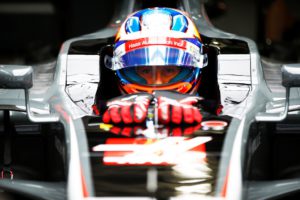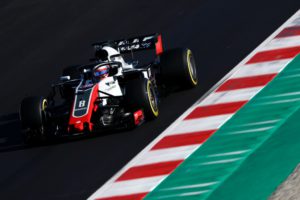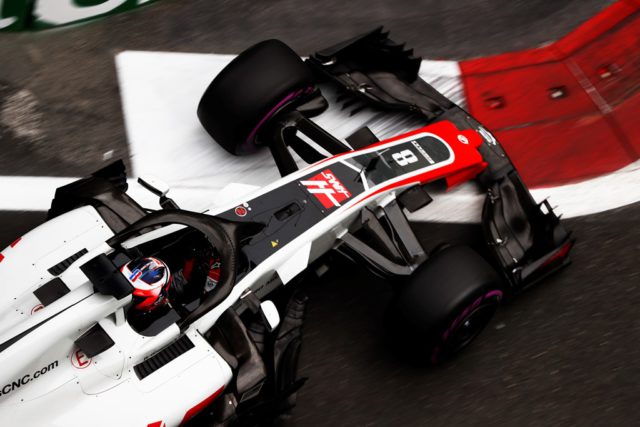Romain Grosjean had a nightmare Azerbaijan Grand prix which he did not finish at all. But the French driver hopes the case in Spain will be different.
How important is it for Haas F1 Team to put a complete race weekend together at Barcelona, where the speed its shown since testing is carried through practice, qualifying and the race so that you achieve your ultimate goal of scoring points?
“The most important part is the race on Sunday. Baku showed that you can have a tough qualifying, but you can come back in the race. Obviously, that won’t be the case every time. Barcelona is a difficult circuit to overtake, so it’s always easier to have a smooth weekend and make sure that both cars are well in the points by Sunday.”
When mistakes are made, are they compounded by the fact that the midfield is as competitive as it’s ever been?
“The midfield is very competitive and very interesting, but I don’t think any mistake changes those results. You want to be able to score as many points as you can, whenever you can.”
Barcelona was repaved prior to preseason testing. How did the new surface rubber in as testing took place and what are your expectations for the track’s evolution during the Spanish Grand Prix?
“I did quite like the new tarmac at Barcelona. There was more grip than it had previously and a faster lap time. Now the question is going to be how it is with warmer weather. That’s something we’ll find out during the race weekend.”
How helpful is it to go back to Barcelona where Haas F1 Team has the most data of any track in Formula One simply because you spent two weeks testing there before the season even started?
“It’s not as vital as it was in the first year. Now we’ve got good data from everywhere, and the team is really working in a good direction. The engineering group is getting stronger, as well as the group of mechanics, so I don’t think it’s that important that we go back to Barcelona.”
 Haas F1 Team showed speed in preseason testing at Barcelona, and despite the up-and-down start to the year, it’s maintained that speed through the first four races. Does that show the strength of the Haas VF-18 and, more specifically, its adaptability as the series has visited four distinctly different circuits?
Haas F1 Team showed speed in preseason testing at Barcelona, and despite the up-and-down start to the year, it’s maintained that speed through the first four races. Does that show the strength of the Haas VF-18 and, more specifically, its adaptability as the series has visited four distinctly different circuits?
“Yes, I think we’ve got a really good baseline and, obviously, the challenge of the year is to keep the development going to make sure that we stay in the race.”
In six career Formula One starts at Barcelona, you’ve finished in the points four times. Is there a comfort level with Barcelona because of all the laps you’ve run there that allows you to perform well in the race?
“No, not really. I think I was lucky to have some good cars some years and being in the points. I don’t think knowing the track is an advantage. Everyone knows the track as well as I do.”
What is your favourite part of Barcelona and why?
“Turns one, two and three – the mid- to high-speed corners – there’s always a good feeling there.”
 Is there a specific portion of Barcelona that is more challenging than other aspects of the track?
Is there a specific portion of Barcelona that is more challenging than other aspects of the track?
“Sector three is the sector where you can gain or lose lap time. That’s the key to getting a good lap in qualifying.”
Explain a lap around Barcelona, especially now after having competed there with the faster, current-generation car as well as the track having new tarmac.
“The biggest difference in Barcelona is in turns one and two. We carry much more speed than before. Similarly, in turns seven and nine, there’s a massive difference. The last sector is a bit more fun, as well. We’ve got more rear downforce, therefore we can go a bit more on power.”
Do you have any milestones or moments from your junior career that you enjoyed at Barcelona?
“I’ve had my only fastest race lap in Formula One at Barcelona. Apart from that, in 2009 in GP2, I won the first race, and in 2011, I had some good overtaking there. It hasn’t always been a brilliant track for me.”
Capitaines Sacha et Simon ❤️?
Week-end à la maison ?#r8g pic.twitter.com/Q69fFrzfZZ— Romain Grosjean (@RGrosjean) May 5, 2018

































